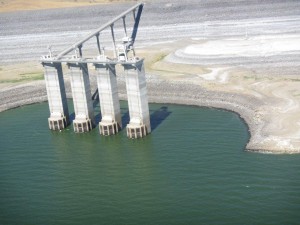No matter what your opinion is of the water situation in California, certainly the need for more capacity and production (i.e. desalination) is vital for a state that is home to roughly 40 million people and is for the most part a semi-arid region.
I have long wondered why more water capacity and retention plans weren’t created in the Los Angeles area, which I lived in for the better part of five decades. A handful of towns here and there did but most did not, expecting water to keep flowing from regions like the Southern Sierra and the Colorado River. Here on the Central Coast in Paso Robles, where I’ve now lived for seven glorious years, we too are working on garnering water from every resource available (go here and here for more on Paso’s water issues).
Sadly, politics plays a destructive part in the problem and in fact one of the reasons the San Luis Reservoir – which is the largest off-stream reservoir in the world – lacks water is due to pumping restrictions instituted by the federal government. Along with runoff from rain, San Luis gets water from the Delta and in-turn supplies much of the Silicon Valley with its drinking water.
Although state and federal politics get in the way, growing capacity is a viable option to help with California’s ongoing water problems and this blog (see below for full story by Jay Lund) offers some insight into how that may work and if it’s feasible. I believe everything must be done and expansion of current reservoirs through sediment removal should definitely be explored.
Cheers,
Daryle W. Hier
.
 Shasta Reservoir. Source: California Department of Water Resources
Shasta Reservoir. Source: California Department of Water Resources
By Jay Lund
Removing sediment from reservoirs is often suggested as a potentially better way to expand storage capacity than raising dam heights or building new reservoirs. This is a natural notion to explore given the cost and likely environmental impacts of traditional expansions.
For perspective, the construction cost of conventional reservoir expansion is about $1,700 to $2,700 an acre-foot (af) of storage capacity. For example:
- Expanding Shasta Reservoir at $1,700/af: $1.1 billion for 634,000 af of new capacity
- Building Sites Reservoir (Colusa County) at $1,800/af: $2.3 billion to $3.2 billion for 1.3 million to 1 .8 million af of new capacity
- Building Temperance Flat Reservoir (upper San Joaquin River) at $1,900/af: $2.5 billion for 1.3 maf of new capacity
- Expanding Los Vaqueros Reservoir at $2,000/af: $120 million for 60,000 acre-ft of new capacity
- Expanding San Luis Reservoir at $2,700/af: $360 million for…
View original post 523 more words


